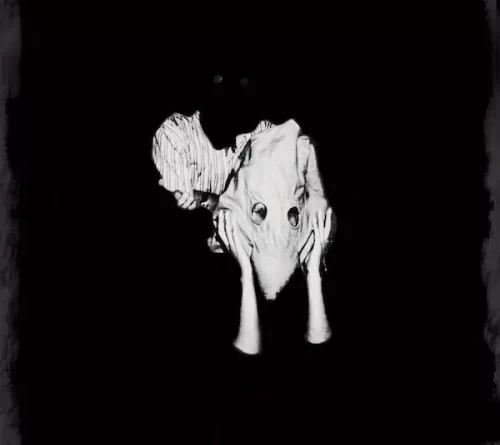HEAVY METAL HISTORY: Kveikur – Sigur Rós
Maybe it took the surprise release of Átta in June for us to realise just how long it’d been since SIGUR RÓS released a record of new music. They hadn’t entirely disappeared in the decade since Kveikur – they toured the globe, contributed to soundtracks, dropped ambient mixtapes – but in a world of structured album cycles, SIGUR RÓS were just meandering. During that time, the band were pursued by the Icelandic government over tax evasion, and drummer Orri Páll Dyrason was accused of sexual assault, leaving the band in 2018.
Kveikur sounds ten years removed from Átta too. Their 2023 return is gentle, reentering a climate that is faster moving and, depending who you ask, more divided than before. This modern SIGUR RÓS have taken on the responsibility of lowering the volume and appealing for calm.
But that’s not how we last left them. Ten years ago, the band were getting louder, gritting their teeth and leaning into the rock half of their post-rock label. Sure, they had always been capable of a clatter – live staple Popplagið positively erupts – but across Kveikur they rely on more conventional structures and louder compositions. It’s their first record where no track runs for at least 8 minutes. Instead of their trademark sprawling movements, these tighter songs are some of the band’s most assertive; even their most aggressive. The previous year’s Valtari (2012) had felt like a hazy daydream, and before that, Með suð í eyrum við spilum endalaust (2008) seemed custom built to capitalise on the Hoppíolla phenomenon. They were friendly albums, palatable for BBC Radio listeners and nature documentaries.
Hints Kveikur wouldn’t be more of the same arrived in a tour preceding the album’s release. Tucked in the setlist between the glacial and delicate Vaka and Sæglópur, a song that sounds like the first day of spring, was Brennisteinn. Kveikur’s opening track is an industrial nightmare, with percussion that grinds like a factory and devastating electronic bass notes, unlike anything else in their arsenal. It’s still a shock to the system. While many English-language speakers won’t go out of their way to translate Jónsi’s lyrics (when they are translatable), that Brennisteinn means ‘brimstone’ is little surprise, and that he sings of aching joints and scratching claws is understood through the song’s mechanical textures. It’s apocalyptic in sound and scale, and one of the band’s more terrifying tracks.
While nothing else is quite so jarring, putting Brennisteinn up front sets the tone, like Svefn-g-englar and Glósóli on previous records. Its crashing percussion pervades the record, particularly on the title track, another stomper of a song with a pulsing bass holding together the chorus’s cacophony. For those who always found SIGUR RÓS too delicate, this is the album where they hit just that bit harder, scream that bit louder. In some ways it’s the darker half of Jónsi’s solo record Go, another concise collection of songs propelled by percussion, although that experience is an altogether lighter one. Instead, here on Kveikur’s title track, Jónsi sings of searing palms to the bone, repeating “it burns“. It is, by a considerable distance, the song most played live from the album, and the only Kveikur song represented in setlists since 2017.
It’s a real shame, then, that the record is underappreciated and underrepresented in the band’s live shows. No, it doesn’t shock like the arrival of Ágætis byrjun (1999), or have the majesty of ( ) (2002), nor is it as easy as Takk (2005) or Með suð… but that gives the album its own identity, its own personality. Especially when considered as a follow up to the more ambient Valtari, Kveikur is the maximalist to its minimalist. But it’s also the danger to the preceding albums’ safety. None of these tracks turned up in David Attenborough docs, as they purposefully turned away from their mass appeal sound of the late 2000s. In SIGUR RÓS’s discography, Kveikur casts and acts as a shadow.
That’s to its hindrance too. The band know what their fans want (even if they did refuse to play Hoppípolla for ten years), and the abrasion of this record rarely features in live sets or other songs. It’s there at the end of Hjartað hamast and in the punch of Í Gær, but across nine tracks, it didn’t seem to land.
And yet, SIGUR RÓS are incapable of creating music without beauty. The jangling of Hrafntinna, Rafstraumur’s jaunty pace, the ice-clear guitar work on Bláþráður. To this day, the band have never cast a shadow without providing light to pierce through it, and the album is covered in their typical grace. But even these tracks have an edge; distortion puncturing the stillness, loudness disturbing the serenity. That jet-black artwork looms large over everything about Kveikur, contrasted with the tranquil greens of the two preceding records. It is, for better or worse, the odd one out.
Currently on tour with the London Contemporary Orchestra, all albums are represented in the set – except Kveikur. Maybe its lack of lasting impact led to the creatively adrift decade they found themselves in, before returning with the warmly received Átta, full of renewed energy after a successful tour for the 20th anniversary of ( ) last year. SIGUR RÓS are on an upswing. Kveikur deserves more than to be left behind.

Kveikur was originally released on June 17 2013 via XL Recordings.
Like SIGUR RÓS on Facebook.

